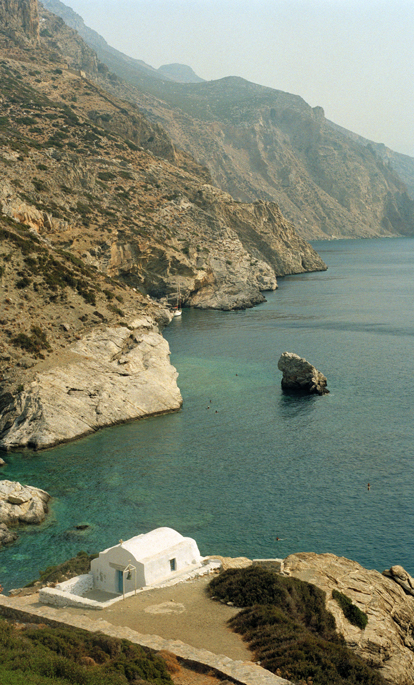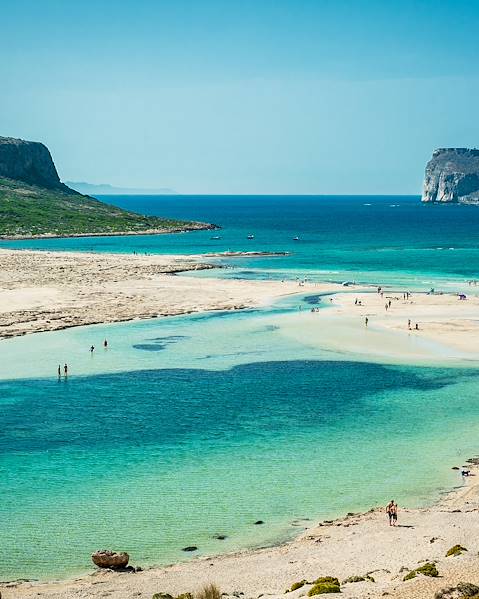The geography of Greece is a testament to its rich history, diverse landscapes and the enduring allure of its ancient wonders. From the rugged peaks of the mainland to the idyllic islands of the Aegean and Ionian Seas, Greece offers a captivating blend of natural beauty and cultural heritage. Whether you seek adventure in the mountains, relaxation on the bleached beaches, or a journey through time in its fiery geology, Greece has it all.
Overview
In addition to being the southernmost country in Europe, Greece also boasts the continent’s longest coastline. Its mainland borders Albania, Macedonia, Bulgaria, and Turkey, while three seas surround its coast: the Aegean Sea to the east, the Mediterranean on the southside and the Ionian Sea to the west. Forests, rivers, valleys and mountains are major features of the geography of Greece. The mainland, the islands and Peloponnese Peninsula are the country’s three principal regions, each featuring different types of terrain.
The Mainland: Mythical Mountains and Valleys
Mainland Greece is a stunning mosaic of mountains[NP3] , valleys and plains that stretch from the Pindus Range in the north to the Peloponnese Peninsula in the south. The backbone of Greece, the Pindus is a majestic mountain range that offers breathtaking vistas and thrilling hiking opportunities. Mount Olympus, the legendary home of the Greek gods, stands 9,570 feet above sea level and became the country’s first national park. As well as being home to the country’s highest peak, the range contains one of the world's deepest canyons, Vikos Gorge, which plunges to 3,600 feet. It’s a haven for nature enthusiasts, offering awe-inspiring views and challenging trails. The mainland is also adorned with lush valleys, such as the Thessalian Plain, where the mythical River Peneus meanders through fertile lands.
The Aegean Islands: Sun, Sea and History
The Aegean Sea, dotted with over 2,000 islands, is a paradise for beach lovers, history buffs and sailors alike. The Cyclades, including iconic islands such as Santorini and Mykonos, boast whitewashed villages perched atop dramatic cliffs overlooking the azure waters. These islands are renowned for their stunning sunsets, vibrant nightlife and archaeological sites such as the ruins of Akrotiri. Further east, the Dodecanese Islands, including Rhodes and Kos, offer a blend of medieval charm and ancient history. The medieval city of Rhodes, an UNESCO World Heritage site, is a living testament to the island’s rich past with its imposing walls, cobblestone streets and the Palace of the Grand Master. But beyond their sun-drenched beaches and ancient ruins, the islands hold a fiery secret. From Santorini’s dramatic caldera to the lesser-known volcanic wonders of Milos and Nisyros, these islands offer exceptional opportunities to explore the remnants of ancient eruptions. Whether it’s walking on black sand beaches, marvelling at lunar-like landscapes or venturing into volcanic craters, the geography of the Aegean Islands promises an unforgettable journey into Earth’s fiery depths.
The Ionian Islands: Emerald Gems of the West
On the western side of Greece, the Ionian Islands beckon with their lush green landscapes, gin-clear waters and slower pace of life. Corfu, the most famous of the Ionians, enchants travellers with its Venetian architecture, olive groves and stunning beaches. The island’s old town, another UNESCO World Heritage site, is a maze of narrow streets, vibrant squares and hidden courtyards. Kefalonia, the largest of the islands, boasts spectacular cliffs, secluded coves and the mesmerising Melissani Cave where sunlight filters through an underground lake, creating a magical spectacle. Neighbouring Zakynthos, also known as Zante, is famous for the shipwreck nestled in the secluded bay of Navagio Beach. It too is a paradise for beach lovers and nature enthusiasts. Beyond their picturesque landscapes and turquoise waters, the Ionian Islands boast a geological heritage that’s as captivating as their cultural and historical treasures. From the limestone cliffs and karst formations of Corfu to the seismic history and underground wonders of Kefalonia and the sea stacks and hidden beaches of Zakynthos, the islands’ geology offer a fascinating glimpse into Earth’s forces at work.
The Peloponnese: Land of Legends and Ancient Wonders
The Peloponnese Peninsula, connected to the mainland by the Isthmus of Corinth, is a treasure trove of ancient marvels and natural beauty. Iconic Olympia, the birthplace of the Olympic Games, invites visitors to step back in time and explore the ruins of the sacred site, while the fortified city of Mycenae, with its imposing Lion Gate and the Tomb of Agamemnon, offers a glimpse into the Mycenaean civilisation. The UNESCO-listed ancient theatre of Epidaurus, renowned for its exceptional acoustics, still hosts performances to this day. In addition to its rich history and cultural heritage, the Peloponnese Peninsula is geological wonder. Exploring the towering Taygetos Mountains, the coastal wonders of the Mani Peninsula and the dormant Methana Volcano provides a deeper understanding of the region’s natural beauty and the intricate processes that have shaped this enchanting corner of the country.
If the geography of Greece makes you want to back your bags, immerse yourself in its warm hospitality and embark on a journey of spellbinding stories, our specialists are on hand to make your dream trip a reality.
















